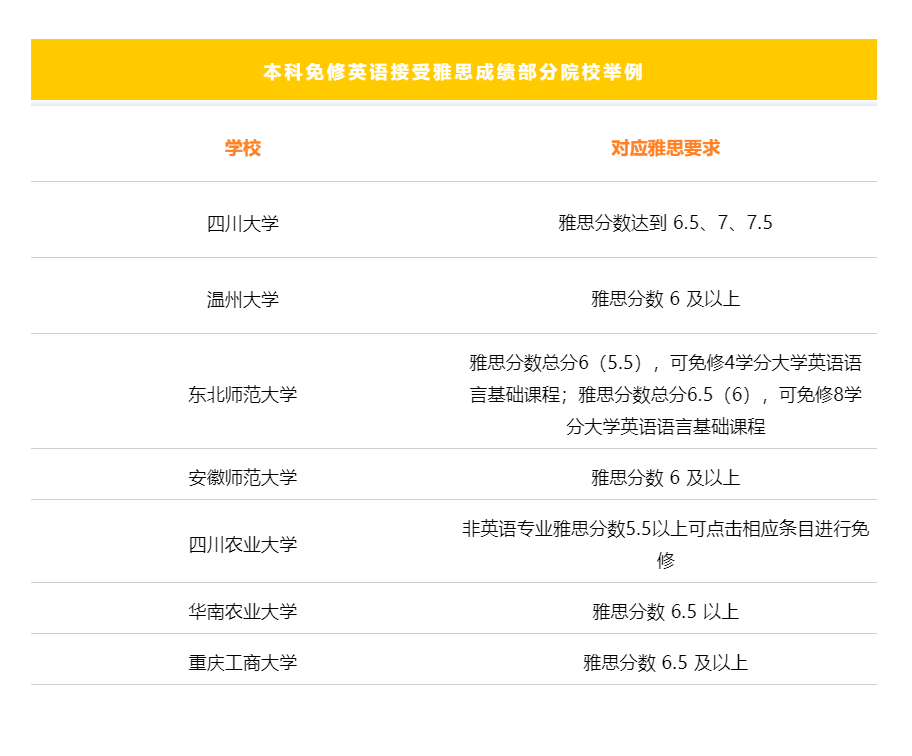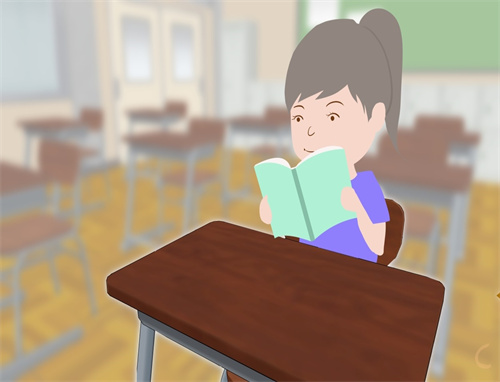托福阅读提升不能只顾看课外书籍,这5个学习要点需重视的,今天小编给大家带来托福阅读提升不能只顾看课外书籍,希望能够帮助到大家,下面小编就和大家分享,来欣赏一下吧。
托福阅读提升不能只顾看课外书籍 这5个学习要点需重视
托福阅读备考学习要点:打好词汇基础
新托福阅读有一个很大的特色就是有专门考察单词的题型,也就是词汇题。从文章中抽出一个单词,给四个选项,让考生选择与这个单词词义最接近最符合的。这些词汇是没有一个大纲让考生去背的,只有靠考生平时自己大量的词汇积累,尤其是一些学术学科的词汇。
例如关于宇宙内容的几大行星的名字,形成恒星的物质是什么,地球内部构造的词汇等等。而且词汇题所占的比例还非常之高,一篇阅读文章13道题目中可能有3-5题是词汇题。所以如果决定了要参加IBT考试,就一定要大量地去背单词,按话题或按学科背都要比从A背到Z要有效的多。
托福阅读备考学习要点:了解基本语法知识
新托福阅读考试是一项比较全面的考察学生英语能力的内容,所以从词汇开始,一直到句子已经篇章都有对应的考题类型去考察。但是要理解句子的含义,光是词汇认识也不一定能完全搞清楚,有的时候需要通过语法知识去分析。这种语法在很多题型中有所体现。例如指代题,要分析代词所指的先行词是哪个,有时就要通过句子主谓宾成分的分析才能找到。
托福阅读备考学习要点:牢记逻辑关系词
英语句子的理解很多时候是要去理解其逻辑关系的,常见的逻辑关系有并列(and, as well),比较(than, as….as),因果(because, so, therefore, thus, result from),递进(also, furthermore),转折(but, however, yet)等等。句子内有这些逻辑关系,句子和句子之间也有这些逻辑关系,这样才能理清整篇文章的脉络,去完成例如句子简化,插入句子这类题型。
托福阅读备考学习要点:加强快速阅读能力
新托福阅读考试每篇的时间是规定为20分钟,除了看长篇的文章外,还有11或13道题目的内容,所以时间是非常紧张的,因此在阅读的时候速度就很关键。小编提醒考生要改掉一些阅读的坏习惯,例如逐字阅读,出声阅读,或者指着阅读等,这样的习惯只会拖慢阅读的速度。所以快速阅读能力在考试中是非常重要的,读的时候要以意群来看。
托福阅读备考学习要点:注重归纳能力培养
新托福阅读的最后一大题都是以全文意思的归纳为基础才能完成的,尤其是summary,考察的就是考生对文章的整体把握。因此考生在平时练习的时候一定要注意对文章段落的归纳,能够在较短的时间内把文章段落的中心大意读出来,然后进行总结,最后选择出最能代表文章中心含义的内容。如果能在平时就注重归纳能力的培养,那么考试的时候就不用害怕summary这种归纳概括性的题型了。
托福阅读真题原题+题目
Elizabeth Hazen and Rachel Brown copatented one of the most widely acclaimed wonder drugs of the post-Second World War years. Hazen and Brown's work was stimulated by the wartime need to find a cure for the fungus infections that afflicted many military personnel. Scientists had been feverishly searching for an antibiotic toxic enough to kill the fungi but safe enough for human use, since, unfortunately, the new wonder drugs such as penicillin and streptomycin killed the very bacteria in the body that controlled the fungi. It was to discover a fungicide without that double effect that Brown, of New York State's Department of Health Laboratories at Albany, and Hazen, senior microbiologist at the Department of Health in New York, began their long-distance collaboration. Based upon Hazen's previous research at Columbia University, where she had built an impressive collection of fungus cultures, both were convinced that an antifungal organism already existed in certain soils.
They divided the work. Hazen methodically screened and cultured scores of soil samples, which she then sent to her partner, who prepared extracts, isolated and purified active agents, and shipped them back to New York, where Hazen could study their biological properties. On a 1948 vacation, Hazen fortuitously collected a clump of soil from the edge of W.B. Nourse's cow pasture in Fauquier County, Virginia, that, when tested, revealed the presence of the microorganisms. In farm owner Nourse's honor, Hazen named it Streptomyces Noursei, and within a year the two scientists knew that the properties of their substance distinguished it from previously described antibiotics. After further research they eventually reduced their substance to a fine, yellow powder, which they first named fungiciden. Then renamed nystatin (to honor the New York State laboratory) when they learned the previous name was already in use. Of their major discovery, Brown said lightly that it simply illustrated how unpredictable consequences can come from rather modest beginnings.
1. What is the main topic of the passage ?
(A) The lives of Hazen and Brown.
(B) The development of a safe fungicide.
(C) The New York State Department of Health.
(D) The development of penicillin.
2. What can be inferred from the passage about penicillin?
(A) It effectively treats fungus infections.
(B) It was developed before nystatin.
(C) It was developed before the Second World War.
(D) One of its by-products is nystatin.
3. Why does the author mention Columbia University in line 10?
(A) Hazen and Brown developed nystatin there.
(B) Brown was educated there.
(C) Hazen did research there.
(D) It awarded a prize to Hazen and Brown.
4. The word both in line 11 refers to
(A) Hazen and Brown
(B) penicillin and streptomycin
(C) the Department of Health laboratories at Albany and New York
(D) double effect
5. What substance did Brown and Hazen analyze?
(A) Dirt
(B) Streptomycin
(C) Bacteria
(D) Penicillin
6. Who was W. B. Nourse?
(A) A microbiologist
(B) A teacher of Hazen's
(C) A collector of fungi
(D) A farmer
PASSAGE 43 BBCAA D
托福阅读真题原题+题目
The nervous system of vertebrates is characterized by a hollow, dorsal nerve cord that ends in the head region as an enlargement, the brain. Even in its most primitive form this cord and its attached nerves are the result of evolutionary specialization, and their further evolution from lower to higher vertebrate classes is a process that is far from fully understood. Nevertheless, the basic arrangements are similar in all vertebrates, and the study of lower animals gives insight into the form and structure of the nervous system of higher animals. Moreover, for any species, the study of the embryological development of the nervous system is indispensable for an understanding of adult morphology.
In any vertebrate two chief parts of the nervous system may be distinguished. These are the central nervous system (the nerve cord mentions above), consisting of the brain and spinal cord, and the peripheral nervous system, consisting of the cranial, spinal, and peripheral nerves, together with their motor and sensory endings. The term autonomic nervous system refers to the parts of the central and peripheral systems that supply and regulate the activity of cardiac muscle, smooth muscle, and many glands.
The nervous system is composed of many millions of nerve and glial cells, together with blood vessels and a small amount of connective tissue. The nerve cells, or neurons, are characterized by many processes and are specialized in that they exhibit to a great degree the phenomena of irritability and conductivity. The glial cells of the central nervous system are supporting cells collectively termed neuroglia. They are characterized by short processes that have special relationships to neurons, blood vessels, and connective tissue. The comparable cells in the peripheral nervous system are termed neurilemmal cells.
1. What does the passage mainly discuss?
(A) The parts of a neuron
(B) The structure of animals' nerve
(C) The nervous system of vertebrates
(D) The development of the brain
2. According to the passage , the nerve cord of vertebrates is
(A) large
(B) hollow
(C) primitive
(D) embryological
3. The author implies that a careful investigation of a biological structure in an embryo may
(A) Improved research of the same structure in other species
(B) A better understanding of the fully developed structure
(C) Discovering ways in which poor development can be corrected
(D) A method by which scientists can document the various stages of development
4. The two main parts of the central nervous system are the brain and the
(A) sensory endings
(B) cranial nerve
(C) spinal cord
(D) peripheral nerves
5. All of the following are described as being controlled by the autonomic nervous system EXCEPT
(A) connective tissue
(B) cardiac muscle
(C) glandular activity
(D) smooth muscle
6. In what lines does the author identify certain characteristic of nerve cells?
(A) lines 1-2
(B) lines 9-12
(C) lines 12-14
(D) lines 16-18
PASSAGE 44 CBBCA D
托福阅读提升不能只顾看课外书籍相关文章:
★ 2020年个人职业生涯规划范本五篇
★ 托福阅读长难句分析汇总
托福阅读提升不能只顾看课外书籍
下一篇:返回列表






